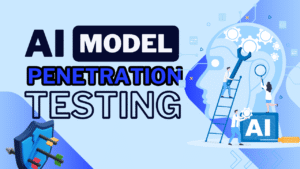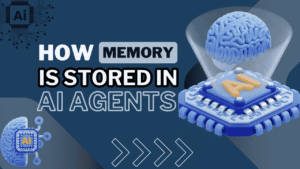Imagine you’re chatting with a super-smart AI, like a helpful assistant on your phone or computer. You’ve probably heard about prompt engineering – that’s the art of carefully wording your questions or instructions to get the best answers from AI models. But what if I told you there’s something even bigger and more powerful called context engineering?
It’s like upgrading from a basic bicycle to a fully equipped electric bike with GPS, lights, and a basket for all your stuff. In this article, I’ll explain both concepts in simple, everyday language, just like we’re having a casual conversation over coffee. We’ll break down the differences, dive into how they work, and see why combining them makes AI way smarter – especially with tools like RAG (Retrieval Augmented Generation) and AI agents.
By the end, you’ll understand how these ideas turn basic AI chats into dynamic, problem-solving systems. We’ll use real-world analogies, fun examples (including a quirky travel agent named Graeme), tables for easy comparisons, bullet points for key tips, and even a bit of code to show it in action.
On This Page
Table of Contents
Introduction: Why AI Needs More Than Just Good Questions
Picture this: You’re lost in a new city and ask a stranger for directions to a restaurant. If you just say, “Where’s the best place to eat?” you might end up at a fast-food joint when you wanted fine dining. That’s like basic prompting in AI – vague inputs lead to meh outputs. Prompt engineering is all about refining that question: “Can you recommend a romantic Italian restaurant within walking distance, under $50 per person?” Now you’re steering the AI (or large language model, LLM for short) toward exactly what you want.
But what if the stranger had a map app on their phone, knew your allergies from a quick chat, or remembered you’d mentioned being vegetarian earlier? That’s where context engineering comes in. It’s not just about the words you use; it’s about building a whole “environment” around the AI so it has everything it needs – like documents, memories, tools, and real-time info – to give spot-on responses.
To make this crystal clear, let’s meet Agent Graeme, our fictional AI travel booking expert. Think of Graeme as James Bond but for vacations – sleek, efficient, but sometimes a bit off if not set up right. If I prompt Graeme with: “Book me a hotel in Paris for the DevOps conference next month,” he might reply, “Sure! The Best Western Paris Inn is booked – great WiFi and free parking.” Sounds good, right? Except… that’s Paris, Kentucky, not Paris, France! Oops.
This mix-up isn’t just bad prompting (I should’ve specified France). It’s a context engineering fail. A smarter setup would’ve let Graeme check your calendar, search online for the conference location, or pull from a company policy file to avoid booking a ritzy spot that blows the budget. In our follow-up: “My conference is in Paris, France.” Graeme books the Ritz at €900/night with champagne breakfast. Fancy, but your boss won’t approve it without knowing the rules.
The lesson? Prompt engineering crafts the instruction. Context engineering supplies the full toolkit for success. Now, let’s explore each in depth.
Understanding Prompt Engineering: The Art of Asking Better
Prompt engineering is like directing a movie scene: You tell the actors (the AI) exactly how to act, what lines to say, and how to deliver them. It’s the process of designing input text – instructions, examples, and formats – to guide an LLM’s behavior and output. Why does it matter? LLMs are trained on massive data but can hallucinate (make stuff up) or go off-track without clear guidance. Good prompts make them reliable.
This isn’t rocket science; it’s part art, part experiment. Anyone can learn it with practice. Let’s look at the key techniques, explained with analogies and examples.
Key Techniques in Prompt Engineering
- Role Assignment: Imagine hiring a chef versus a nutritionist for meal advice. The role shapes everything. In prompts, you assign a persona to the AI: “You are a senior Python developer reviewing code for security vulnerabilities.” This makes the AI adopt that expert’s mindset, vocabulary, and focus. Without it, a generic “Review this code” might miss critical issues. Example: For writing an email, prompt: “You are a professional business consultant. Draft a polite email declining a meeting invitation due to scheduling conflicts.” Result? Polished, professional tone – not casual chit-chat.
- Few-Shot Examples: This is “show, don’t tell,” like teaching a kid to tie shoes by demonstrating a few times. Provide 2-3 input-output pairs to illustrate the desired format and style. Analogy: Baking cookies – instead of saying “Make cookies,” show recipes: Input: “Flour, sugar, butter.” Output: “{ingredients: [‘flour’, ‘sugar’, ‘butter’], steps: [‘mix’, ‘bake’]}.” The AI learns to output JSON neatly. Example: Want product reviews in a specific format? Prompt: “Review this phone: Great battery, okay camera. Example 1: Product: Laptop. Review: Pros: Fast processor. Cons: Heavy. Rating: 4/5. Example 2: … Now, your turn.”
- Chain of Thought (CoT) Prompting: Before advanced models, this was gold for reasoning. Add “Let’s think step by step” to force the AI to break down problems, avoiding snap judgments. Real-world analogy: Solving a puzzle – don’t guess; list clues one by one. For math: “What’s 15% of 280? Let’s think step by step: First, 10% of 280 is 28. 5% is 14. Total 42.” Example: Complex task like planning a trip: “Plan a 3-day vacation in Tokyo. Explain your reasoning step by step.” The AI outlines Day 1 (sights), Day 2 (food), etc., with logic.
- Constraint Setting: Set guardrails, like telling a storyteller, “Keep it under 5 minutes.” Prevents rambling or using forbidden info. Example: “Summarize this article in exactly 100 words, using only facts from the text.” Keeps outputs focused and accurate.
These techniques boost accuracy by 20-50% in tasks like coding or analysis (based on common benchmarks). But they’re limited to what’s in the prompt. For dynamic, real-world smarts, we need context engineering.
Context Engineering: Building the Full AI Ecosystem
If prompt engineering is writing a script, context engineering is building the stage, props, and crew. It’s the broader practice of programmatically assembling everything an LLM “sees” during inference (when it generates responses). This includes prompts, but also retrieved documents, memories, tools, and more – creating agentic AI systems that act like autonomous helpers.
Agentic AI means AI that doesn’t just respond but takes actions, like booking tickets or querying data. Think of it as upgrading from a chatbot to a personal assistant with a Rolodex, calendar, and internet access.
Let’s unpack the core components with analogies and examples.
Components of Context Engineering
- Memory Management: AI needs to remember stuff, just like you jot notes during a long phone call.
- Short-Term Memory: Handles ongoing chats. Analogy: A waiter’s notepad for your order – summarizes long conversations to fit the LLM’s “context window” (limited input size, like 4K-128K tokens). Example: In a therapy bot, it summarizes: “User discussed anxiety from work; last session focused on coping strategies.”
- Long-Term Memory: Stores info for future use via vector databases (fancy search systems). Example: For Agent Graeme, recall your past trips: “User prefers budget hotels near airports; allergic to nuts.”
- State Management: Tracks progress in multi-step tasks, like a video game saving your level. Analogy: Cooking a meal – know if you’ve chopped veggies before baking. For trip booking: “Flight booked? Yes. Arrival: 2 PM. Now schedule taxi.” Example: In e-commerce AI: State checks “Cart: Items added. Payment: Pending. Shipping: Address confirmed.”
- Retrieval Augmented Generation (RAG): The star of dynamic knowledge. RAG pulls relevant info from external sources, blending semantic (meaning-based) and keyword search. Analogy: A librarian not handing the whole library but just the right books. Instead of dumping a 100-page policy doc, RAG extracts: “Max hotel rate in Paris: €200/night for conferences.” How it works: Embed text into vectors, search for similarities, retrieve top matches, feed to LLM. Coding Example: Here’s a simple Python snippet using libraries like FAISS (for vectors) and Hugging Face for embeddings. (Note: This is conceptual; run in a real env with pip installs if needed.)
from sentence_transformers import SentenceTransformer
import faiss
import numpy as np
# Sample documents (e.g., travel policies)
docs = [
"Max hotel rate in Paris, France: €200/night for business trips.",
"DevOps conference location: Paris, France, next month.",
"User preferences: Budget hotels with WiFi."
]
# Embed documents
model = SentenceTransformer('all-MiniLM-L6-v2')
embeddings = model.encode(docs)
# Create vector index
index = faiss.IndexFlatL2(embeddings.shape[1])
index.add(np.array(embeddings))
# Query for RAG
query = "Book hotel for DevOps conference in Paris."
query_emb = model.encode([query])
D, I = index.search(np.array(query_emb), k=2) # Top 2 matches
# Retrieved contexts
retrieved = [docs[i] for i in I[0]]
print("Retrieved:", retrieved)
# Now, feed to LLM prompt: "Using this context: {retrieved}, book a hotel."This pulls relevant snippets, making AI responses grounded in facts.
- Tools and Interfaces: LLMs can’t act alone; tools let them query APIs, databases, or code. Analogy: Giving a detective binoculars and a phone – not just clues. Example: For Graeme, tools: “CheckCalendar(tool): Fetch events.” Descriptions guide use: “Use when location unclear.”
- Integrating Prompt Engineering: Prompts aren’t separate; they’re dynamic. Start with a base: “Analyze logs.” Inject context: “Recent alerts: {from RAG}. Known issues: {from memory}.” Result: 80% dynamic, 20% static – super adaptive.
Comparing Prompt Engineering and Context Engineering
To see the contrast, here’s a handy table:
| Aspect | Prompt Engineering | Context Engineering |
|---|---|---|
| Focus | Crafting static/dynamic instructions in text. | Assembling full input: prompts + data + tools. |
| Scope | Single interaction or task. | System-level for agentic, multi-step workflows. |
| Strengths | Quick, low-cost improvements in output quality. | Enables real-world actions, accuracy with external info. |
| Limitations | Limited to what’s in the prompt; no external access. | More complex setup; needs engineering skills. |
| Analogy | Writing a precise email. | Building an email system with attachments, CCs, and auto-replies. |
| Example Use | Generating a poem with style constraints. | Booking travel with policy checks and live prices. |
In short, prompt engineering gives better questions; context engineering builds better systems.
How They Work Together: Smarter AI in Action
Alone, prompt engineering is like a sharp knife – useful but limited. Add context engineering, and it’s a full kitchen. For Agent Graeme 2.0: Base prompt: “Book hotel.” Context injects: Conference details (RAG), budget (memory), calendar check (tool). Result: “Booked affordable spot in Paris, France – under €200, near venue.”
Real-world apps:
- Customer Service Bots: Prompt for empathy; context pulls order history.
- Medical Assistants: Prompt for diagnosis steps; RAG from patient records (with privacy!).
- Coding Helpers: Few-shot for syntax; tools execute code snippets.
Analogy: Driving – prompts are directions; context is fuel, maps, and traffic updates.
Challenges and Tips
No system’s perfect. Over-engineering context can overwhelm LLMs (token limits). Tip: Use summarization for memory.
For beginners: Start with prompts, then add simple RAG via libraries like LangChain.
WrapUP: Leveling Up Your AI Game
We’ve journeyed from basic prompts to full-blown context engineering, seeing how it supercharges AI with RAG, agents, and more. Like evolving from a flip phone to a smartphone, this combo makes AI practical and powerful. Next time you interact with an AI, think: Is this just a good question, or a smart system?
FAQs
What exactly is prompt engineering?
Imagine you’re asking a friend for recipe ideas, but they keep suggesting weird stuff because your request was too vague. Prompt engineering is like fine-tuning your question to get spot-on advice. It’s the skill of writing clear, detailed instructions for an AI (like a large language model or LLM) so it understands what you want and responds accurately. You add things like examples, roles, or step-by-step guides to steer the output. For instance, instead of saying “Tell me about dogs,” you might say: “Act as a vet and explain three common health issues for small dogs, with tips on prevention.” This makes the AI more reliable and less likely to wander off-topic.
Okay, then what’s context engineering?
If prompt engineering is crafting a smart question, context engineering is like setting up a whole room full of helpful tools and info around that question. It’s the bigger picture of putting together everything the AI needs to “see” when it’s thinking – not just your words, but also extra data, memories from past chats, documents pulled from searches, and even external tools. This turns a basic AI into a super-capable system that can handle real tasks, like checking facts online or remembering your preferences. Analogy: It’s upgrading from asking directions on the street to using a GPS app that knows traffic, your favorite routes, and weather updates.
How are prompt engineering and context engineering different?
The main difference boils down to scope and power. Prompt engineering focuses on the words in your input – it’s quick and tweaks how the AI thinks right away. But it’s limited to what’s typed in that moment. Context engineering, on the other hand, builds a dynamic setup behind the scenes, pulling in outside resources to make the AI smarter over time or across tasks. For example:
Prompt engineering might fix a vague request by adding “Be specific about locations.”
Context engineering could automatically add map data or your travel history to avoid mistakes, like booking a hotel in the wrong Paris (Kentucky instead of France!).
In short, one polishes the question; the other equips the entire answering machine.
Why do we need both? Can’t one do the job?
You could get by with just prompt engineering, but combining them is like adding turbo to a car – it makes AI way more effective for complex stuff. A good prompt sets the direction, while context engineering provides the fuel (like real-time info) to go further. Together, they create “agentic” AI systems that act independently, solving problems step by step. Picture a travel app: Your prompt says “Plan a trip,” but context adds your budget, calendar, and flight prices for a complete, personalized plan. Without both, AI might guess wrong or miss key details.
What role does RAG play in all this?
RAG stands for Retrieval Augmented Generation, and it’s a key part of context engineering. Think of it as the AI’s personal librarian: When the AI needs facts, RAG searches a database or documents for relevant bits and feeds them in, so responses are based on real info, not just guesses. This cuts down on “hallucinations” (AI making up stuff). Analogy: Instead of reciting a book from memory, the AI flips to the exact page you need. For example, in a work AI, RAG could pull your company’s rules on expenses to ensure a suggested hotel fits the budget.
What’s an AI agent, and how does it tie in?
An AI agent is like a virtual assistant that doesn’t just talk – it does things. It’s powered by context engineering to handle multi-step jobs, using tools, memory, and RAG. For instance, our fun example of Agent Graeme (a travel-booker AI) isn’t just chatting; it checks calendars, searches conferences, and books hotels. Agents keep track of “state” (like where you are in a process) and remember details from before. Without context, an agent might flop; with it, it’s like having a reliable sidekick who anticipates your needs.
Can you give a real-life example of these in action?
Sure! Let’s say you’re using an AI to help with homework. With plain prompt engineering: “Explain gravity simply.” You get a basic answer. Add context engineering: The AI pulls from science articles via RAG, remembers your grade level from past chats, and uses a tool to simulate a falling object. Result? A tailored explanation with visuals and examples, like “Gravity is like a magnet pulling apples to the ground – here’s why astronauts float in space.” In business, it could mean an AI reviewing contracts: Prompts guide the review style, while context fetches legal updates.
Are there any downsides or challenges?
Yep, nothing’s perfect. Prompt engineering can take trial and error – bad wording leads to off answers. Context engineering is more advanced, so it might need coding skills or setup time, and overloading with too much context can confuse the AI (like overwhelming someone with info). Privacy is a biggie too – pulling personal data means being careful. Tip: Start small, test prompts first, then layer on context for bigger tasks.
How can I get started with these concepts?
No need for fancy degrees! Experiment with free AI tools like ChatGPT. For prompt engineering, try adding roles or examples to your questions and see the difference. For context engineering, look into platforms like LangChain (a library for building AI systems) – they make adding RAG and agents easier. Online tutorials are great; practice with simple projects, like an AI that plans meals using recipe databases.
Will this stuff change in the future?
Absolutely – AI is evolving fast. As models get better at reasoning, prompt engineering might become simpler, but context engineering will grow with more tools, like real-time web access or smarter agents. Expect AI to handle even more “human-like” tasks, like negotiating deals or creative brainstorming, all while staying accurate and helpful.







